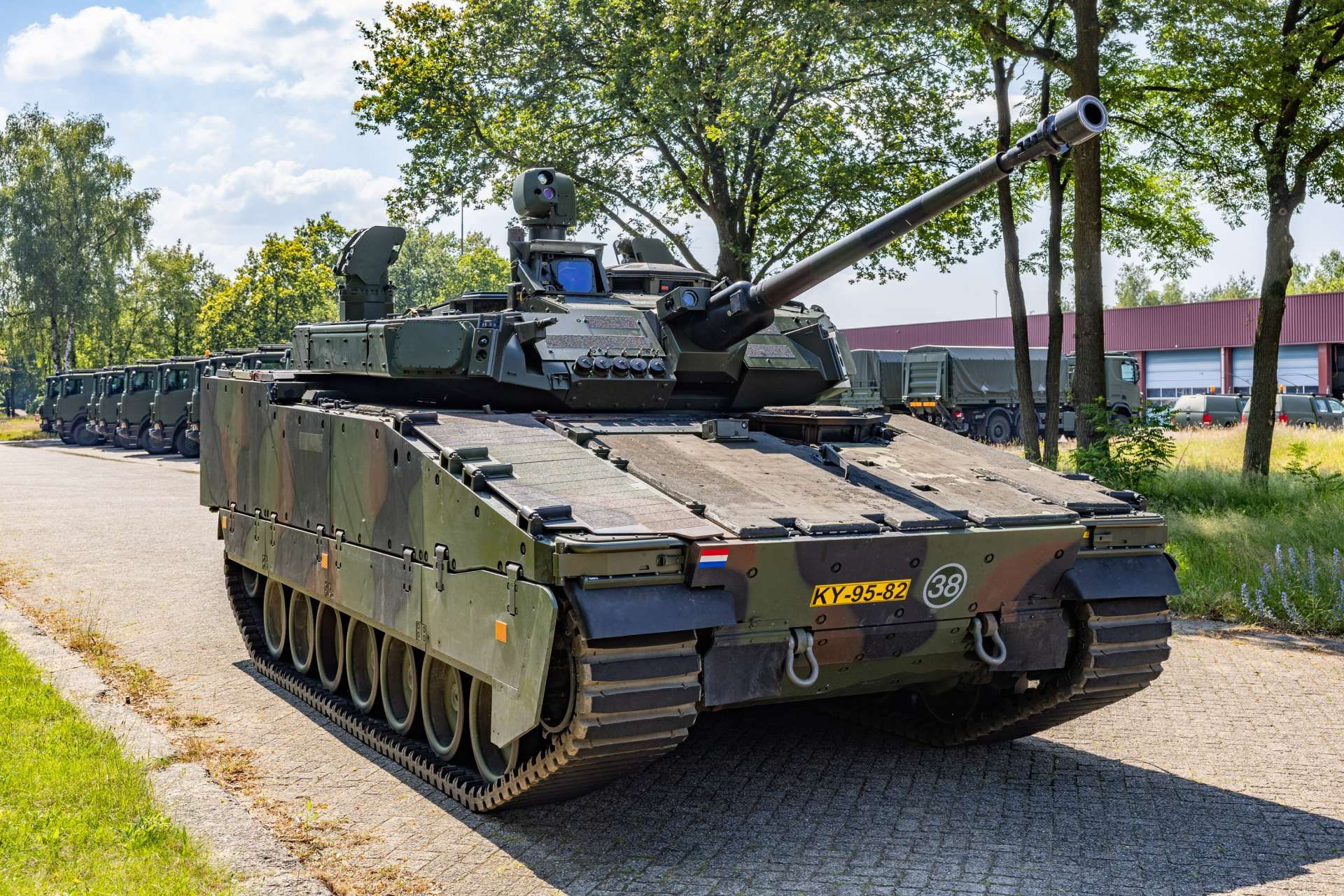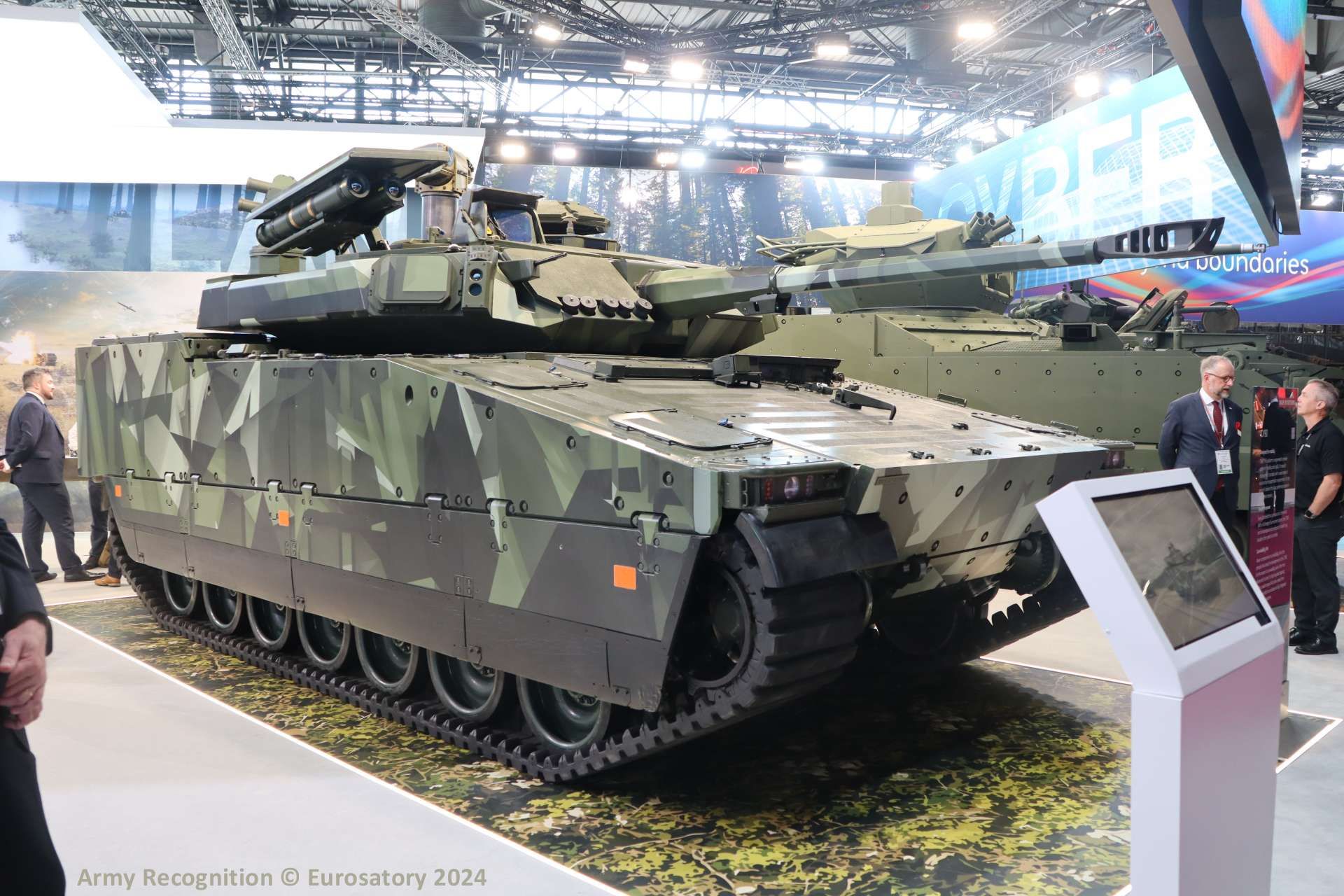Breaking News
Denmark orders 115 CV9035 MKIIIC IFVs from BAE Systems for €1.3 Billion.
On August 22, 2024, the Danish Ministry of Defence Acquisition and Logistics Organization awarded a contract to BAE Systems Hägglunds AB for the procurement of 115 CV9035 MKIIIC infantry fighting vehicles (IFVs). The contract is valued at approximately DKK 9.975 billion (€1.337 billion) and is part of Denmark’s ongoing efforts to enhance its military capabilities, particularly through the development of a heavy brigade.
Follow Army Recognition on Google News at this link

The CV9035 MkIIIC variant, which Denmark is acquiring, is equipped with a Bushmaster III 35mm autocannon, offering different capabilities compared to the 40mm Bofors gun used in earlier models like the CV9040C. (Picture source: BAE Systems)
The decision to negotiate this contract without prior competition was based on the specific technical and operational requirements of the Danish Armed Forces. According to the Danish Ministry, no alternative suppliers were capable of meeting these requirements, leading to the decision to engage directly with BAE Systems Hägglunds AB. The contract’s timeline is estimated at five years, with deliveries scheduled across various military locations in Denmark. The final duration of the contract will extend until all vehicles are delivered, ensuring that Denmark’s operational needs are addressed.
This contract is connected to a broader initiative to modernize Denmark’s fleet of armored vehicles, which includes the Mid-Life Update (MLU) of the country’s existing CV9035 Infantry Fighting Vehicles (IFVs). Announced in March 2024, this update aims to upgrade the fleet, which has been in service since 2007 and has been deployed in international missions, including operations in Afghanistan. The MLU project, initiated with an agreement signed on March 20, 2024, is expected to be completed by 2029.
The MLU involves upgrades to all 44 vehicles in the Danish fleet, including the installation of a new turret with hunter-killer capabilities, increased firepower, enhanced protection, advanced sensors, and improved crew ergonomics. Additionally, the vehicles will be fitted with rubber tracks instead of steel, reducing weight and minimizing noise and vibrations, thereby improving operational efficiency and crew comfort.

These new CV9035 MkIIIC combat vehicles are constructed to the same standards as those in the Netherlands' latest mid-life upgrade program, featuring a newly designed turret with ergonomic enhancements for the crew. (Image source: Twitter/Daniel of Bohemia)
The CV9035 MkIIIC variant, which Denmark is acquiring, is equipped with a Bushmaster III 35mm autocannon, offering different capabilities compared to the 40mm Bofors gun used in earlier models like the CV9040C. The CV9035 MkIIIC is designed with a focus on survivability and mobility and incorporates an electronic architecture that supports future upgrades. The vehicle has a gross weight of approximately 32 tonnes, with the potential to increase to 35 tonnes, and includes the E35 turret, similar to that used on the AMV35 Combat Reconnaissance Vehicle (CRV), which provides enhanced ergonomics and targeting systems.
The CV90 family, which includes the CV9035, has a long history of development. It was created in the mid-1980s by the Swedish Defence Materiel Administration (FMV) in collaboration with Hägglund & Söner and Bofors to meet the Swedish Army's requirements for a mobile platform capable of air defense and anti-tank roles. The CV90 entered service in the mid-1990s and has undergone multiple iterations, from the initial Mk 0 to the current Mk IV, incorporating advancements to meet changing battlefield needs.
The CV90 is designed for various terrains, particularly those common in the Nordic subarctic climate. It features a turret system with different armaments depending on the variant: the Swedish version uses a 40mm Bofors autocannon, while export versions are equipped with either a 30mm or 35mm Bushmaster autocannon.

The CV90 entered service in the mid-1990s and has undergone multiple iterations, from the initial Mk 0 to the current Mk IV, incorporating several technological advancements to meet new battlefield needs. (Picture source: Army Recognition)
The vehicle's modular design allows it to perform various roles, including air defense, reconnaissance, and electronic warfare. It weighs between 20 to 37 tonnes, depending on configuration, and is powered by a diesel engine that provides a high power-to-weight ratio, enabling it to operate in challenging terrains such as snow and wetlands.
There are multiple variants of the CV90, each tailored to specific operational needs. These include the CV9040 (standard infantry fighting vehicle), CV9030 (export variant with a 30mm cannon), CV9035 (with a 35mm cannon for the Dutch Army), and specialized versions such as the Forward Command Vehicle, Forward Observer Vehicle, Anti-Aircraft Vehicle, and Armored Recovery Vehicle. The latest Mk IV version includes a more powerful engine, improved survivability, and a fully digital architecture to integrate with modern combat systems.
The CV90 is used by several countries in Europe, including Sweden, Norway, Finland, Switzerland, the Netherlands, Estonia, Slovakia, and the Czech Republic. Norway was the first export customer, and the platform remains in use across these nations, with recent developments such as a joint production agreement with Ukraine, indicating its continued relevance in meeting contemporary defense needs.


























